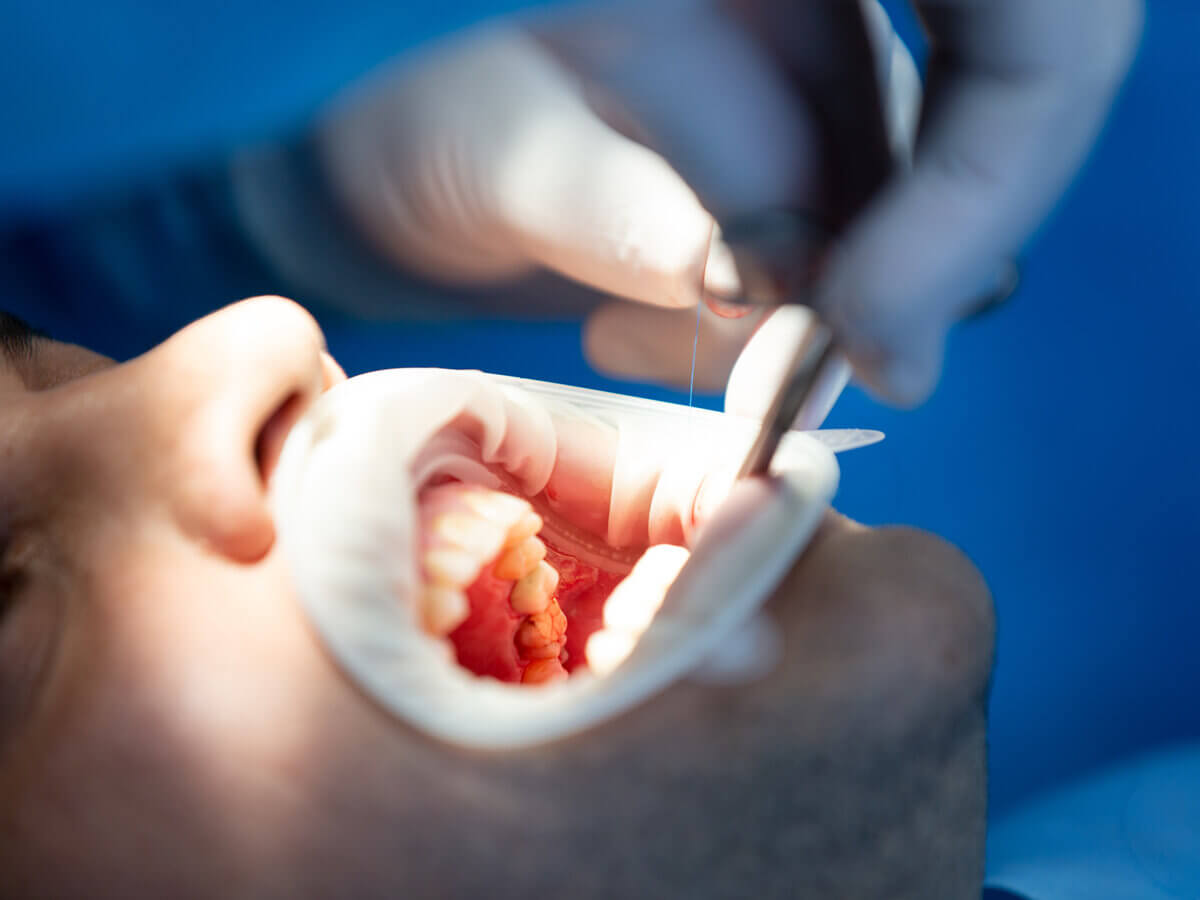Blog
Dental hygiene tips for healthy teeth & gums

What You Need To Know About Osseous Surgery
Osseous means something related to bones. When periodontal disease progresses to a stage where it starts threatening the bones in your mouth, osseous surgery is needed to treat the severe gum disease effectively. The other names for this type of procedure are gingivectomy and pocket reduction surgery.
An osseous procedure is essential when other non-surgical treatments, such as root planing and scaling, can no longer stop bacteria from advancing. If the disease is left untreated, it might result in tooth loss.
Healthy mouths have less than two to three millimeters of pocket or rift between your gums and the base of the teeth. If you suffer from gum disease, this pocket size increases, and when this gap becomes more than 5 millimeters, the area can not be appropriately cleaned at home or even through professional cleaning.
With the deepening of these pockets, you get prone to more bacteria accumulation in these pockets which wears away your bone and gums. Pocket reduction surgery can get rid of these bacteria living in the pockets. Let us explore more about this surgery, understand when your dentist would recommend gingivectomy, and how this treatment is performed.
When Would You Need Osseous Surgery
When non-surgical treatment is not an option, you must undergo osseous surgery.
- Most people can have healthy teeth by maintaining oral hygiene daily through regular brushing and flossing. It helps remove plaque (a sticky film of bacteria) which causes gum disease.
- Your bone and gum tissues normally hold your teeth snugly. But as gum disease advances, gum tissues start pulling away from the teeth, creating gum pockets and exposing more of the tooth’s roots.
- These pockets are home to bacteria that invade the gum line resulting in more bone and gum loss.
- At this stage, only pocket reduction treatment can remove the bacteria from these pockets and restore the teeth, and the operation also prevents further damage and teeth loss.
Goals of Pocket Reduction Surgery
The primary aim of osseous surgery is to reduce the pockets that form due to gum disease.
- Gingivitis is a mild gum disease that has not yet spread to your connective tissues or jawbone. As per studies, around ninety percent of people suffer from gingivitis.
- If gingivitis is not treated in time, it could lead to more severe periodontitis, which causes damage to the bone supporting your teeth.
- If pockets and gum disease are not treated at this stage, you will eventually lose your tooth.
- Most gum disease surgeries, including osseous surgery, have a high success rate.
- The efficacy of this surgery is enhanced if you avoid tobacco, listen to post-surgery recommendations of your surgeon, and follow good dental hygiene.
- Osseous surgery is safe, but in some cases, it could cause the following complications or side effects:
- Bleeding
- Teeth sensitivity
- Tooth loss
- Gum recession
How is Osseous Surgery Performed
A periodontist performs osseous surgery, which takes around two hours to complete. If root planing or antibiotics cannot treat your gum disease, then your dentist would recommend pocket reduction surgery. Following are the steps performed during osseous surgery:
- Your doctor would give you local anesthesia to numb the area.
- The oral surgeon would make a small incision along your gum line to fold back the gum and remove bacteria lying underneath.
- Any damaged or irregularly shaped bone in that area is then smoothed down.
- A periodontal regeneration technique might be required if the bone is impacted heavily. These techniques include guided tissue regenerative membrane and bone grafts.
- Your doctor would then sew back your gum and cover it with a periodontal dressing to manage the bleeding.
Recovery After Osseous Surgery
Usually, people can return to regular life after a few days of gingivectomy. Your periodontist would recommend dietary changes post-surgery and during recovery, along with a prescription for painkillers. Here are some tips you should follow for a smooth recovery from pocket reduction surgery:
- You must avoid smoking. It could be challenging for some of us, but your doctor would create an appropriate plan to help you.
- Do not use a straw for drinking liquids till your sutures have entirely healed.
- Avoid strenuous physical activities during the recovery phase.
- For the first few days, you must stick to eating soft foods.
- You must change the gauze regularly.
- If you have swelling, placing an ice pack against the affected area outside the mouth could help with the pain.
- Every twenty-four hours, use salt water to rinse your mouth gently.
If you do not treat gum issues in their early stage, it could lead to pockets between your gum and teeth which can only be corrected by osseous surgery. In this surgery, the doctor removes accumulated bacteria underneath the gum line and then sutures them back. Good oral hygiene and regular dental checkups would help catch the oral disease early on, where you can avoid surgeries and tooth loss.
